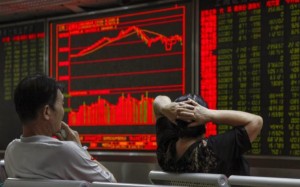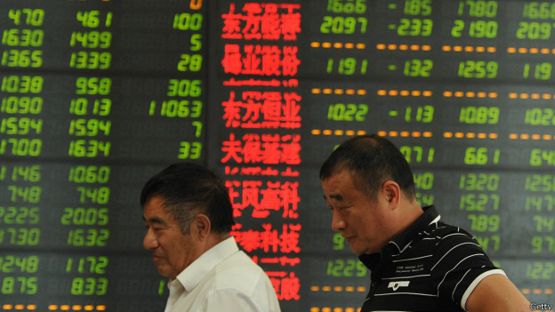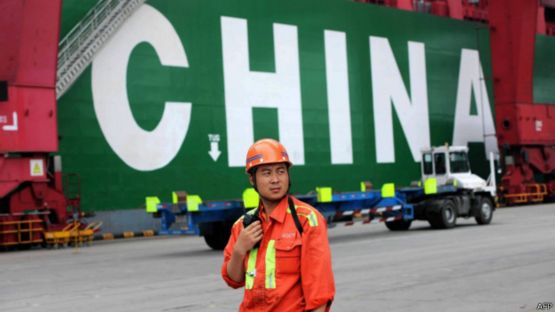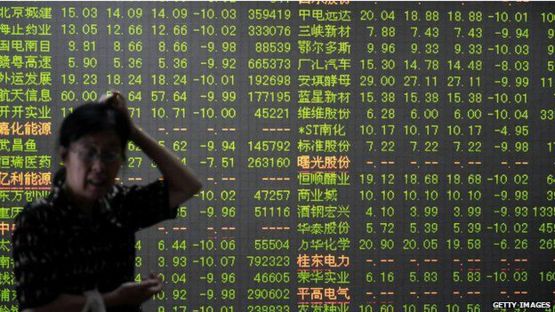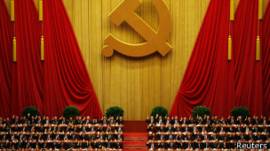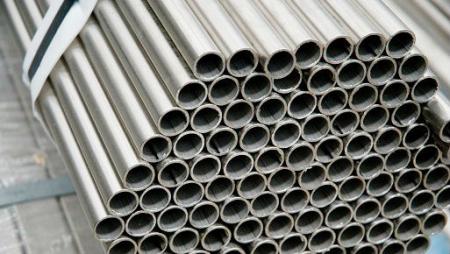As the world’s largest emitter of greenhouse gases, China has made a number moves in the past year to reduce emissions and clean up its environment. Most recently, on June 30, Chinese Premier Li Keqiang said China would reduce its carbon intensity, the amount of carbon dioxide emitted per unit of GDP, by 60 to 65 percent of 2005 levels by 2030. The pledge comes ahead of the U.N. climate change summit to be held in Paris later this year. Li also reiterated that renewable energy should make up 20 percent of China’s primary energy supply by the same date. Could Beijing’s announcements signal it is at last getting out in front of China’s pollution problem, or do they reflect a low-balled target that could let polluters off the hook in the coming years? Could the announcement pave the way for greater cooperation between China and the United States, the world’s second-largest emitter? In this ChinaFile conversation, experts discuss.

Source: Global Carbon Atlas (1970-2013 data); 2030 estimate, Dept. of Climate Change, National Development & Reform Commission of China
Barbara A. Finamore, senior attorney and Asia director at the Natural Resources Defense Council (NRDC):
Beijing has been moving out in front of the pollution problem over the past few years — just look at the regional coal caps or the ban on new coal, steel, and cement plants in Beijing and Tianjin, among other areas. The carbon intensity target that was announced does come in somewhat below our expectations, given the slate of policies that can be implemented to further reduce emissions. In fact, the Natural Resources Defense Council (NRDC) has been working with partners in China on a national China Coal Cap that, if implemented, would reduce emissions significantly and see them peak earlier than 2030.
The renewable energy target is a serious commitment from China. They are adding renewable power between now and 2030 that truly dwarfs comparison — it is the equivalent of adding the entire U.S. power grid, but only in the form of non-fossil fuel energy. We have seen a lot of cooperation between the United States and China, especially through the Climate Change Working Group and EcoPartnerships between the countries — and there will be more of these types of initiatives as we go forward.
Given that China’s population is over four times that of the United States, it is not surprising that China emits twice as much. The real question is at what point China starts to bend the curve on emissions growth. As policymakers in China like to point out, China’s emissions will peak at a much lower GDP per capita than that of developed countries. In 2030, when emissions are supposed to peak, China’s GDP per capita will be at about $10,000 in 2005 dollars. The United States peaked when its GDP per capita was at about $40,000. The EU peaked when its GDP per capita was at about $20,000, while some other developed countries still haven’t peaked at $50,000. Comparing the peak value per capita, China’s emissions per capita when it peaks will be no more than 10 tons greenhouse gas (GHG) per capita. The U.S. peaked at 19.5 tons GHG per capita, while Germany peaked at 14.1 tons GHG per capita and the UK peaked at 11.3 tons GHG per capita.
What China is trying to accomplish is really setting a new type of growth trajectory that must take the environment into account..
China will need a greater annual reduction rate of carbon intensity than most developed countries to reach its commitment of reducing carbon intensity by 60 to 65 percent by 2030. China would have to maintain a 3.6 to 4.1 percent annual reduction rate from 2005 to 2030. The U.S. rate since 1990 was 2.3 percent, and from 2005 to 2025 it would need to average 3.5 to 3.6 percent to reach the 26 to 28 percent total emissions reduction target as laid out in the U.S. climate pledge. The EU reduction rate since 1990 was also 2.3 percent, and the rate required to meet the EU goal of a 40 percent total emissions reduction in 2030 from 1990 levels would be 3.2 percent.
The comment above was coauthored by NRDC International Climate Advocate Han Chen.
Sam Geall, research fellow on Low-Carbon Innovation in China at the University of Sussex:
China’s commitments to the U.N. climate negotiations illuminate a real turnaround underway in its economy: from energy-intensive industries towards innovation and services as the basis of higher-quality future growth.
Until recently, China’s headline-making targets would have sounded unachievable, but last year, China’s coal consumption fell by 2.9% from 2013 and continued to fall in the first quarter of 2015.
For many analysts, this doesn’t just show the short-term effect of a slowdown. It indicates the country’s coal industry is in structural decline, underpinned by aggressive pollution-control policies and support for clean energy sources.
The country’s target to reach 20 percent non-fossil fuel sources in primary energy consumption, for example, will entail adding a huge 800 to 1,000 gigawatts (GW) of renewables over the next 15 years — around the capacity of the entire U.S. electricity system to date.
China plans to install 200 GW of wind and 100 GW of solar by 2020. The country is now world’s leading investor in renewables, and these industries can expect continued support in the 13th Five Year Plan (2016-2020).
Does this mean that Beijing’s smog has lifted? That China has overcome its local enforcement problems? That the expansion of infrastructure envisioned by the “One Belt, One Road” plan will be carbon-neutral? Of course not. But there are reasons to be hopeful.
First, at the local level: it seems like Beijing is finally getting serious about addressing its chronic implementation problems. Traditionally, collusion between regulators and polluters and misaligned political evaluation metrics for officials have thwarted environmental initiatives. However, the unpromisingly titled Central Document Number 12, “Opinions of the Central Committee of the Communist Party of China and the State Council on Further Promoting the Development of Ecological Civilization,” published in April, suggests that local government officials will be promoted according to environmentally adjusted benchmarks, rather than simply GDP growth, and that environmental black marks will remain on their work records.
Second, at the elite level: it seems like climate-friendly policies align with the Chinese government’s self-interest. While vested interests and an overriding focus on high growth rates traditionally have worked against green policies, climate policies clearly have other major benefits for China: from addressing rising public concern about air pollution, to positioning the country as a leading exporter of clean technologies.
It is now widely believed that China will overachieve on its climate targets — and that its emissions, for example, are on track to peak by 2025. The balance of evidence suggests China’s transition is underway, and we would be unwise to ignore it.
Angel Hsu, joint faculty at the Yale School of Forestry and Environmental Studies and Yale-NUS College:
First, under its new “intended nationally determined contribution” (INDC), China only has to achieve half of its average annual percent reduction in carbon intensity (5 percent over the last four years) to achieve its 12th Five-Year Plan target. At the low end of the target (16 percent), China will only need to reduce carbon intensity by about 1.6 percent this year and 2.6 percent to achieve the higher end (17 percent). Given these results, it seems China is on track to complete its previously committed 2020 target of 40 to 45 percent reduction. While some say that this progress demonstrates a lack of ambition regarding China’s pledge, we know that China often “under-promises but over-delivers,” so it is not unlikely that it will peak emissions sooner than 2030.
When China is anticipated to peak emissions in 2030, however, it will achieve a per capita emissions much lower than many European countries and the United States. China’s target per capita emissions are expected to peak at an estimated 8 tons of CO2per capita. The United States peaked its carbon emissions in 1973 with around 23 tons per capita, nearly four times what China is expected to achieve. China’s population is also expected to peak in 2030 at 1.465 billion, so further reductions of emissions beyond 2030 will also result in lower per capita emissions.
While the 20 percent non-fossil target has also been widely lauded, it is worth noting that this goal does not solely rely on renewables like wind and solar. China will also increase its reliance on nuclear power generation. Projections estimate that China’s online nuclear capacity will provide about 10 percent of China’s total electricity generation in 2030. The share of nuclear power generation will exceed the percentage of hydropower, which is only expected to increase slightly from around 7 percent in 2020 to 8.5 percent in 2030. Some countries, such as Brazil, have committed to renewable energy targets without hydro. Given hydropower’s controversy in China due to large-scale projects like the Three Gorges Dam, its marginal growth can be seen as a positive, although nuclear power has its own precautions.
China’s pledge proposes “low-carbon living” and a “social participation mechanism” to engage the public to help achieve the country’s carbon goals. This is the first time China has mentioned enlisting the public in a climate pledge to the United Nations Framework Convention on Climate Change (UNFCCC), signaling a heightened awareness that the government cannot achieve its ambitious pledges without popular support and assistance.
China’s INDC has set the bar for other large, rapidly-developing countries and the remaining half of the world that have yet to make their commitments public.
India, for example, is not expected to announce its climate pledge until September. Indications so far suggest that India will not commit to a peak year for emissions but instead will propose two tracks of commitments contingent upon funding. With only a few months left before the Paris climate negotiations, China’s INDC can serve as a critical model for what others can aspire to deliver.
The comment above was edited from a post first published at the Paulson Institute’s blog.
Joanna Lewis, associate professor in the Science, Technology and International Affairs Program at Georgetown University’s Edmund A. Walsh School of Foreign Service:
China’s climate targets are mobilizing actions across the country. The announcements coming from Beijing have clearly demonstrated that China is ready to be a constructive player at COP21, starting with last November’s U.S.-China joint climate announcement and followed up most recently with the INDC submission to the UNFCCC. But it is only with aggressive local action that Beijing’s ambitious national targets can be carried out.
A common criticism of China’s INDC is that a 2030 emissions peak is not sufficiently ambitious, though few projections support that claim. For example, the US Energy Information Administration’s most recent reference scenario for China shows emissions peaking sometime after 2040. It is also important to note that since China’s provinces are at widely varying levels of economic development, in order for China’s total emissions to peak by 2030, most of China’s wealthier provinces will in fact need to achieve a significantly earlier peak. For example, Shanghai municipality has been told that its emissions need to peak by 2020.
Of course, that doesn’t mean that China couldn’t do better and achieve an earlier emissions peak. The key to any emissions peak, including both the timing and level of the peak, will be when a peak in coal consumption can be achieved. A recent study released by China’s National Center for Climate Change Strategy and International Cooperation as part of the China Coal Cap Project demonstrates how carbon emissions could peak between 2020 and 2025 if coal consumption was capped by 2020. The transition away from coal in China is not going to be easy, however, as the coal sector is a major employer in many provinces and a key driver of local economic growth. Employment is key for stability, and few provincial leaders want to risk the social insatiability that could come with massive coal sector layoffs.
Aware that one of the biggest challenges to limiting carbon emissions will be measuring and enforcing the targets being implemented, provincial and local governments have been tasked with developing rigorous measurement, reporting and verification (MRV) procedures. Many of the provinces and municipalities that have been selected to implement an emissions trading scheme for carbon on a pilot basis have made impressive strides in tracking emissions from large emitters and are beginning to impose emissions restrictions in anticipation of a forthcoming national trading scheme. Shanghai, for example, has developed a MRV system based on those used in the European Union and California that includes annual reporting requirements for companies and third party verification. Since tracking carbon is a new requirement for most Chinese companies, provincial government agencies and universities are working hard to train them in correct procedures.
So while China has a ways to go in achieving the emissions reductions needed, all signs point to its government — at all levels — taking the challenge seriously.
Li Shuo, senior climate and energy policy officer for Greenpeace East Asia:
There are two sides to China’s post-2020 climate plan, the environmental and the political; and they are tightly connected to each other and are affected by China-U.S. relations.
On the environmental side, the 60 to 65 percent carbon intensity reduction target and the peaking around 2030 should be viewed as only the floor of action instead of as the “ceiling.” This is because the targets do not fully reflect the significant current energy trends. Coal consumption, which contributes to almost 80 percent of China’s fossil fuel related CO2 emissions, was down in 2014 by 2.9 percent year on year. This brought absolute energy-related CO2 emissions down by about 1 percent — something unthinkable even just a few months ago. Thus, it is likely that China will go beyond what it put on the table last week. In fact, there is already growing consensus that instead of peaking around 2030, the tipping point of China’s emissions may come much earlier than previously thought.
On the political side, one should always realize that China’s emission commitments are very much influenced by political considerations. In this regard, China has followed its traditional diplomatic approach of under-committing and over-delivering. It is also fair to say China’s offer was also shaped by what it perceived to be a fair contribution relative to the U.S. level of ambition (and its own consideration and assessment of whether the United States could deliver its target in the end).
This makes it difficult to answer the question of whether China’s greenhouse gas emissions limits are meaningful — it depends on what the metrics are for something to be “meaningful.”
However, if we were to focus on whether these commitments are meaningful towards addressing global climate change, then the answer is “no.” Given the current pledges by the United States, China, and other major emitters, we are still emitting far too much to stay below 2 degrees temperature rise required by climate scientists. Therefore, more must be done.
Nonetheless, it is significant that the two largest emitters — U.S. and China — are working with each other. The cooperation has already injected valuable political momentum to international climate process, and is a drastically different dynamic compared with six years ago before Copenhagen.
Today, extensive bilateral cooperation is clearly apparent; note the long list of climate related outcomes of the recent U.S.-China Strategic and Economic Dialogue. (A comparative reading of the much thinner E.U.-China climate announcement, signed just a week later, indicates how much more advanced the U.S.-China relationship is). Also note that the politics around climate change in the United States and China are bound closely. While there are further challenges ahead — for the U.S. in getting Congressional support, and for China in implementation — both targets were signed and led by top political leaders, and so it is hard to see how either side can simply walk away without carefully considering the broader political ramifications.
There is still much more work to be done though. It would be short-sighted if the current bilateral cooperation was aimed merely for Paris. It is already clear that there is much that work beyond Paris that would require sustained China-U.S. cooperation extending beyond the term of the Obama administration. Thus, far sighted political fortitude and a continued focus on the implementation by both sides, is key.
En: foreignpolicy





